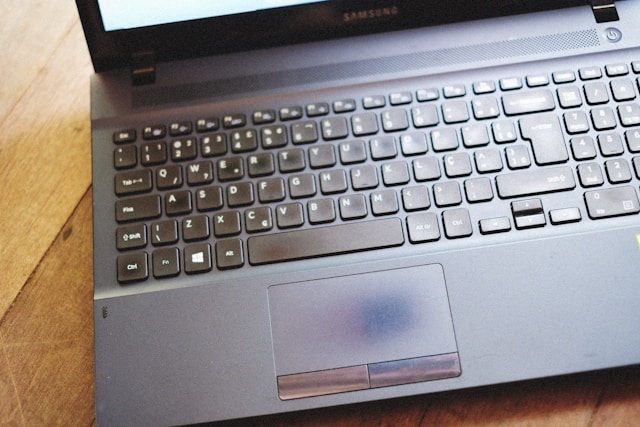Seeing the message “No Battery Is Detected” on your laptop can be frustrating, especially if you rely on your device for work, study, or travel. This error usually appears when Windows cannot recognize the laptop battery, even if it’s installed correctly. It doesn’t always mean your battery is dead sometimes, the issue comes from software glitches, outdated drivers, or loose connections.
In this guide, we’ll explore the common causes of the no battery is detected laptop problem and provide step-by-step fixes to help you get your device running properly again.
Common Causes of ‘No Battery Is Detected’
Before jumping into solutions, it helps to understand why your laptop says no battery detected. Here are the most common reasons:
-
Loose battery connection – The battery might not be properly seated in its slot.
-
Driver or BIOS issues – Outdated or corrupted drivers can prevent Windows from recognizing the battery.
-
Battery damage – Over time, batteries wear out and may stop working.
-
Faulty charger or adapter – A bad power supply can trigger battery errors.
-
Hardware problems – In rare cases, the laptop’s charging circuit or motherboard may be the issue.
Quick Checks Before Troubleshooting
Sometimes the fix is simple. Try these quick checks first:
-
Restart your laptop – A simple reboot can sometimes resolve detection issues.
-
Check the battery connection – If your laptop has a removable battery, power off the system, remove the battery, and carefully reinsert it.
-
Run only on AC adapter – Plug in your charger and see if the laptop works without the battery.
-
Inspect the battery – Look for swelling, damage, or corrosion around the connectors.
If these steps don’t solve the problem, move on to more detailed software and hardware fixes.
Software Fixes for ‘No Battery Is Detected’ on Windows 10
Most laptops showing a battery not detected error can be fixed with software troubleshooting. Here’s what to try:
1. Update Battery Drivers
-
Press Windows + X and select Device Manager.
-
Expand the Batteries category.
-
Right-click Microsoft ACPI-Compliant Control Method Battery and choose Update driver.
-
Restart your laptop.
2. Reinstall Battery Drivers
If updating doesn’t help, try uninstalling:
-
In Device Manager, right-click the same driver and select Uninstall device.
-
Restart your laptop. Windows will automatically reinstall the driver.
3. Update BIOS/UEFI
An outdated BIOS can sometimes cause Windows 10 battery errors. Visit your laptop manufacturer’s support site (Dell, HP, Lenovo, Asus, etc.) and download the latest BIOS update. Make sure to follow instructions carefully to avoid issues.
4. Run Windows Troubleshooter
-
Go to Settings > Update & Security > Troubleshoot > Additional troubleshooters.
-
Select Power and run the troubleshooter.
-
Follow the recommended steps to resolve power-related issues.
Hardware Fixes for Laptop Battery Not Detected
If software solutions don’t work, the problem may be hardware-related. Here are some things you can try:
1. Clean Battery Contacts
Dust and dirt can interfere with the connection between your battery and laptop. Power off your laptop, remove the battery, and gently clean the metal contacts with a dry cloth.
2. Test with Another Charger
A faulty charger can make it look like your battery isn’t detected. Try using a compatible charger to rule out adapter issues.
3. Test with Another Battery
If possible, borrow or purchase a compatible battery and see if your laptop detects it. If the new battery works, your old one is likely dead.
4. Inspect for Physical Damage
Look for bulging, cracks, or leaks on the battery. If you see these signs, replace the battery immediately.
When to Replace the Battery
Even with troubleshooting, some batteries cannot be fixed. Signs that you need a replacement include:
-
The laptop only works when plugged in.
-
Battery not charging despite using a good adapter.
-
Battery not detected in multiple systems.
-
Physical swelling or damage.
Always buy genuine replacement batteries from your laptop’s brand (Dell, HP, Lenovo, Asus, etc.) to ensure compatibility and safety.
Professional Repair Options
If none of the fixes work, the issue may be deeper, such as a damaged motherboard or charging circuit. At this stage, it’s best to:
-
Check your warranty – If your laptop is under warranty, contact the manufacturer for repair or replacement.
-
Visit a certified repair center – Professionals can run hardware diagnostics and replace components safely.
Preventing Future Battery Issues
Once your laptop battery is fixed or replaced, follow these tips to avoid similar problems:
-
Keep your laptop cool by cleaning dust from vents and using it on hard surfaces.
-
Avoid leaving your laptop plugged in constantly; give the battery some charge cycles.
-
Update Windows, drivers, and BIOS regularly.
-
Use only original or certified chargers.
Conclusion
The no battery is detected laptop error can be worrying, but it doesn’t always mean your battery is dead. Many times, updating drivers, checking connections, or cleaning contacts is enough to fix the issue. If your battery is truly faulty, replacing it with a genuine unit will restore your laptop’s portability and performance.









